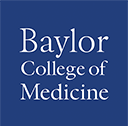Advanced Ventilation Methods
Wednesday, October 28, 2020
Activity Overview
Conventional approaches to positive pressure ventilation involve applying ventilatory patterns mimicking normal through either masks or artificial airways. This is usually done with modes of support incorporating assist/control breath triggering mechanisms, gas delivery patterns governed by either a set flow or pressure, and breath cycling based on either a set volume, a set inspiratory time or a set flow. Often this support includes positive end expiratory pressure and supplemental oxygen. In recent decades a number of novel or unconventional approaches to providing mechanical ventilatory support have been introduced. This activity addresses the advancement of mechanical ventilation and its impact on patient outcomes. Novel approaches to mechanical ventilation to include equipment specifically used at Baylor St. Luke’s Medical Center. The training session will present the new features to the ventilator units to intensivists, respiratory therapists, and nurses.
Target Audience
This course is designed for Intensivists, Respiratory Therapists, and Nurses.
Learning Objectives
At the conclusion of the conference, participants should be able to:
- Describe the novel mode of ventilation and how it works
- List the classification, benefits, drawbacks, and future perspectives of automatic ventilation tailoring algorithms
- State the most relevant technical limitations in modern mechanical ventilators that can affect their performance
- Classify and describe the various ventilation modes
Educational Methods
Lectures ▪ Question and Answer Sessions ▪ Hands-on Demonstration and Training
Activity Evaluation
Evaluation by questionnaire will address program content, presentation, and possible bias.
Physicians
Baylor College of Medicine is accredited by the Accreditation Council for Continuing Medical Education (ACCME) to provide continuing medical education for physicians.
Baylor College of Medicine designates this live activity for a maximum of 4.0 AMA PRA Category 1 Credits™. Physicians should claim only the credit commensurate with the extent of their participation in the activity.
Available Credit
- 4.00 AMA PRA Category 1 Credit™
- 4.00 Attendance

 Facebook
Facebook X
X LinkedIn
LinkedIn Forward
Forward